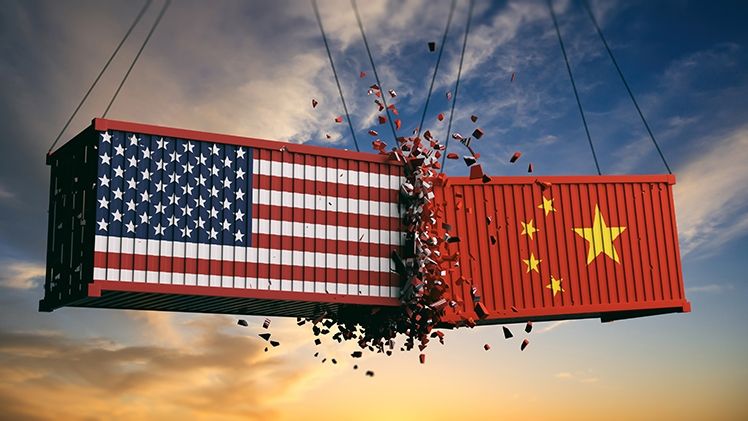Protectionism, US style
- 2024.19.09
- 0
- Download the publication (PDF - 263,37 KB)

Read the article
From Trump to Biden, economic nationalism is back on the agenda in the United States, with a new protectionist matrix underpinned by a security-driven rationale that can take a variety of forms: trade policy, import tariffs and “Make America Great Again” for Donald Trump; and industrial policy, huge subsidies and “Build Back Better” – which could be renamed “Build Back in America” – for Joe Biden.
The vision of the benefits of globalisation, wherein free trade is a seen as a positive-sum game, very much in vogue in the 1980s and 1990s, has now given way to that of the potential dangers of global trade, a source of dependence and weakness. For the United States, with its chronic trade deficit, trade surpluses are something to be suspected; in this zero-sum mercantile world, they serve to legitimise protectionist policies designed to hold back globalisation, now seen as harmful to the US economy.
The US has in its sights China, its great strategic rival and a big winner in the globalisation game, now perceived to be a threat to national security because of the central role it plays in globalised value chains. The idea of de-risking – which amounts to a sort of precautionary protectionism – is intended to address problematic dependencies on Beijing, the aim being to secure supplies of goods and materials deemed critical and mitigate the impact of geopolitical disruption on value chains.
The risk is that trade dependencies might be exploited for political ends through economic coercion (in the form of embargoes, boycotts and export restrictions). We are already seeing examples of this, such as US restrictions on technology exports to China and the screening of foreign direct investment and, in the other direction, the introduction by Beijing of export visas for gallium and germanium, two metals critical to high-performance electronics.
In light of all this, America is rethinking trade with a fresh emphasis on security. This deliberate reconfiguration of trade for security purposes increasingly calls for a proximity-based approach, in terms of both geography and value, to give substance to the concepts of nearshoring and friendshoring. The US is keen to forge closer ties with its neighbours and build value chains on the American continent under the banner of the USMCA free trade agreement with Canada and Mexico. In Asia, in keeping with the idea of “globalisation among friends”, the US favours trade with its allies Japan, South Korea and Taiwan, particularly when it comes to key technologies such as next-generation chips. Its rivalry with China has also prompted the US to seek out alternatives to the latter. In a sort of cross between friendshoring and nearshoring, the development of the “China Plus One” model has resulted in value chains being reorganised to the benefit of “friendly countries” bordering on China. One of the main beneficiaries of this reconfiguration of trade is Vietnam, whose exports to the US have soared. But the volume of inputs from China has risen sharply at the same time, highlighting the growing importance of what are now indirect rather than direct dependencies. In other words, whether through a local presence, investment or customer-supplier relationships, China is weaving its web in countries close to the US, and particularly Mexico, in order to maintain access to the US market, with the aim of circumventing import tariffs and protecting itself against the threat of embargoes and sanctions.
In practice, US imports from China have indeed fallen since the start of the trade war in 2018, mainly for products subject to import tariffs, while trade in products not covered by import tariffs has tended to increase, suggesting that trade barriers are relatively effective. However, the US balance of trade is more or less unchanged and remains structurally in deficit. Furthermore, it is likely – as noted above – that US-China trade has continued through the back door.
Aware of its increasing level of indirect dependency, America could take a harder line, if necessary by imposing rules of origin to thwart China’s diversionary strategy. However, as long as they do not jeopardise national security or pose a threat to America’s technological pre-eminence, these dependencies appear to be acceptable and perhaps even desirable, with efficiency gains redistributed to US households in the form of purchasing power.
Ultimately, mutual interdependence remains the most effective deterrent, helping keep power relations in balance and dissolve political antagonism in the economic interests of all – and hopefully making power rivalries between China and the US less combative.

The US has in its sights China, its great strategic rival and a big winner in the globalisation game, now perceived to be a threat to national security because of the central role it plays in globalised value chains. The idea of de-risking – which amounts to a sort of precautionary protectionism – is intended to address problematic dependencies on Beijing, the aim being to secure supplies of goods and materials deemed critical and mitigate the impact of geopolitical disruption on value chains.
Isabelle JOB-BAZILLE, Group Chief Economist
